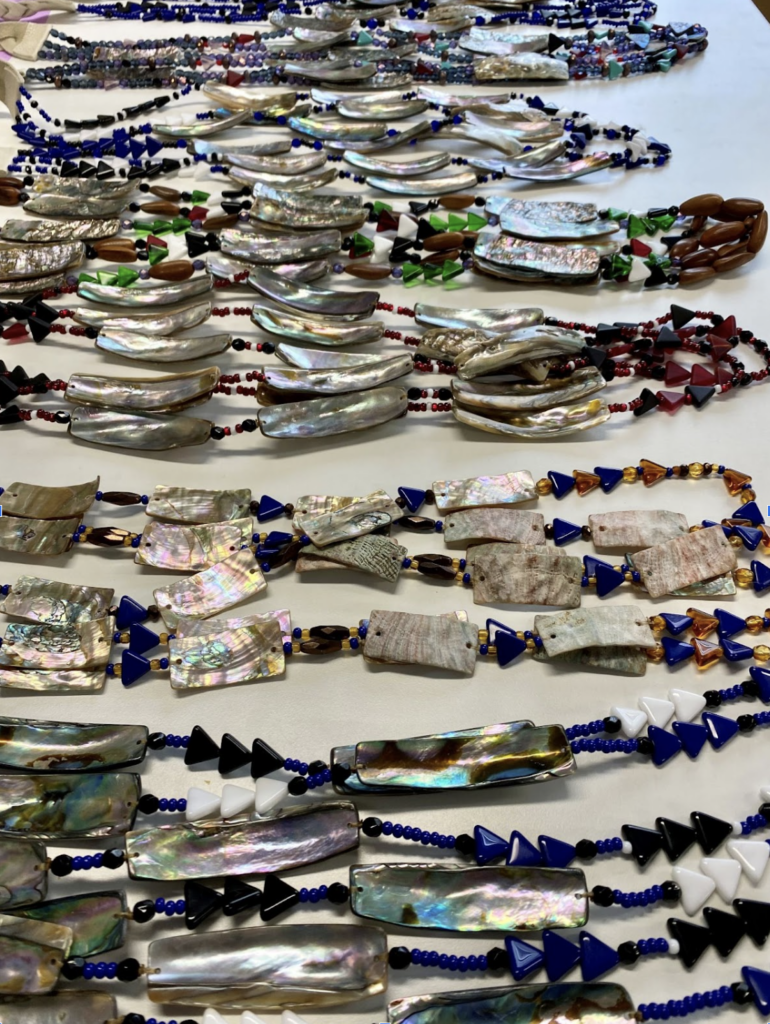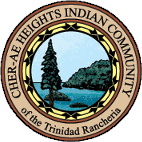Staff
Rachel Sundberg
Tribal Programs Director / Tribal Historic Preservation Officer
Dita Kruger
Cultural Resources Technician
![]()
Cultural Programming
Preservation of language and cultural traditions is one of the highest priorities for the Trinidad Rancheria. The Rancheria continues to be involved in various community outreach and cultural education programs and demonstrations in partnership with other tribes. Additionally, the tribe supports and participates in traditional cultural ceremonies.
The Trinidad Rancheria Cultural Resources Department is responsible for the care and maintenance of the existing basket and regalia collections, creation of new cultural items, development of cultural programming as well as consultation with Federal, State and Local governments on projects that impact our ancestral territory.

We are continuing to develop the strategic plan and direction of the department. The Department has begun long term planning for future programs which will include an oral history project and a cultural center/ tribal museum. Plans for future programming include resuming basket weaving classes, continued regalia making workshops, and other cultural programming in partnership with various departments.
Current programming includes open work day on Fridays in the Cultural Resources Classroom. We meet every Friday to work on various projects including repair of existing regalia, creation of new regalia, materials gathering and preparation, necklace making, etc. Participants are welcome to work on our projects or bring their own.
Culture Resource Management/Tribal Historic Preservation
Since 2011, The Cher-Ae Heights Indian Community of the Trinidad Rancheria has assumed the responsibilities on our tribal lands set out in Section 101(d)(2) of the National Historic Preservation Act “in accordance with subsections (b)(2) and (b)(3), with respect to tribal lands.” Therefore, the Tribe has agreed to:
- Direct and conduct a comprehensive tribal lands and Reservation-wide survey and maintain an inventory of historic and culturally significant properties;
- Identify and nominate eligible properties to the National Register and otherwise administer applications for listing historic properties on the National Register;
- Develop and implement a comprehensive Reservation-wide historic preservation plan covering traditional cultural properties, historic, and archaeological properties;
- Advise and assist, as appropriate, Federal and State agencies and local governments in carrying out their historic preservation responsibilities;
- Cooperate with the Secretary of the Interior, the Advisory Council on Historic Preservation, and other Federal and State agencies, local governments, organizations and individuals (as appropriate) to ensure that culturally significant, archaeological, and historic properties are taken into consideration at all levels of planning and development;
- Provide public information, education, training, and technical assistance, in historic preservation, to interested parties, with particular relevance to Yurok prehistoric and historic preservation;
- Consult with appropriate Federal agencies in accordance with Section 106 of the Act on:
(i) Federal undertakings that may affect historic and culturally significant properties; and
(ii) The content and sufficiency of any plans developed to protect, manage, restore, or to reduce or mitigate harm to such properties
The tribe also consults on projects throughout ancestral territory to ensure the protection of our homelands and our ancestors.
Cultural Resources Technician Dita Kruger assists the THPO in consultation response, GIS mapping and is working on a database of culturally significant plants and places throughout ancestral territory. This data is crucial to the work of the department in the protection and preservation of culturally significant places and species.
